#Signalink
Explore tagged Tumblr posts
Text
VARA FM Setup Guide for KN4OLA's ID-5100
VARA FM Setup Guide for KN4OLA’s ID-5100 Google Drive version: https://docs.google.com/document/d/1Sj32O_nLGkv5TCq3UiNoIDWN22IJlH5p/edit?usp=sharing&ouid=117665750981101640419&rtpof=true&sd=true Visio for creating the connection diagram: https://drive.google.com/file/d/1VyNu-E83HyFbjZrkbgnwro00HkXDzu1k/view?usp=sharing
0 notes
Text
WSJT-x and GridTracker For Great FT8
Great FT8 with WSJT-x and GridTracker It’s been about a year since my last post on the Mac, FT8 and the Ten Tec Omni 6 Plus. Since then I’ve learned a few things, made some refinements in my setup and developed a better idea of how I want to use my station. Also, I was nudged into another post by a friend and fellow ham who wanted more information. This is a long post, so feel free to use the…

View On WordPress
#CW#Elecraft#fldigi#ft8#ham#howto#k3#omni#radio#shortwave#Signalink#Ten Tec#tigertronics#wb0mmc#wsjt-x
0 notes
Text

NYS RACES (radio amateur civil emergency service) had a member share this and I’ve been working thru the nets.
NBEMS (narrow band emergency messaging software) is using our widely available equipment (PC’s) to leverage software such as FLDIGI do manage communication in times of need.
Most PC’s have great sound cards and clocks and can encode decode (with software) data for transmission over radio. Back when I was a new ham in the 90’s this was pretty cutting edge and many of us had dedicated TNC (terminal node controllers) which were expensive and somewhat dedicated to particular modes. Clever people saw the potential of the sound cards to emulate the hardware and fast forwarding we have the means of passing traffic with fewer errors and better throughput speeds.
I’m all for CW but if you’re in ARES or RACES or some emergency comms group for your town/county/state it has to be about the message not the mode. I think we need to keep proficiency in voice and code traffic handling, different situations call for different approaches but, machine to machine will be faster and more reliable if we can maintain such a contact.
Check out some of these nets. Even if you can’t send you’ll decode if the PC can hear the radio. Olivia 8-500 and Thor22 are common modes. If you put the Rxid on it should change modes with the sender for you. When/if you get captivated by “sound card”modes there are kit and prebuilt interfacing devices like SignaLink or Eazy Digi for example. Our hobby can be expensive but adding to your station especially when you’ve got the time to build from kits is an investment in yourself as much as your gear. These modes still are peanuts compared to the TNC options such as PACTOR or the AEA TIMEWAVE PK232 PAKRATT.
If you search NBEMS ARRL there’s some nice posted PowerPoints to flip through to point you towards add on software (all free to download for various platforms) I run Linux and it was a little harder than Windows to set up I managed.
Good luck and best 73
2 notes
·
View notes
Text
Shortwave Radiogram, 3-8 January 2025 (program 383): Digital modes that melt the insulation from copper wire
Happy New Year 2025! With our two weeks of Holiday Spectacular broadcasts finished, we return to our normal format of one MFSK32 text story, one MFSK64 text story, images in MFSK64, and the closing announcements in MFSK32. With the occasional surprise mode or image under the closing music. Experiments with other modes are possible in the future. I am becoming familiar with my new Yaesu FT-991A transceiver, with QSOs on a variety of bands and modes with this "shack in a box." I have experimented with the FT-991A's USB port to deliver digital modes directly to my PC without need for a separate interface. However, because of complexities in installing Yaesu's driver software, and anomalies with my PC audio settings (which take a long time to normal), I've decided to continue using the SignaLink USB interface. I can use the same cable connection as I did with my FT-897D, and the SignaLink jumpers are the same. The SignaLink has handy TX and RX controls on the front. I know how it works, so I'll stay with it. For the Shortwave Radiogram transmission Saturday at 2300-2330 UTC, WRMI has lately been using both 7570 and 7780 kHz. You will remember that 7570 was off the air for several weeks due to hurricane damage. Its replacement has been 7780. Both were transmitting last week, and so the schedule below lists both frequencies. I'm not sure how long WRMI will maintain both frequencies, but it's good to have a choice for the time being. A video of the previous Shortwave Radiogram (program 382 Holiday Spectacular) is provided by Scott in Ontario (Wednesday, December 25, 1330 UTC). The audio archive is maintained by Mark in the UK. Analysis is provided by Roger in Germany. Here is the lineup for Shortwave Radiogram, program 383, 3-8 January 2025, in MFSK modes as noted: 1:40 MFSK32: Program preview 2:48 MFSK32: India launches space docking mission 6:41 MFSK64: Microwaving to recycle insulated wire* 11:25 MFSK64: Images of the week* 27:12 MFSK32: Closing announcements * with image(s) Please send reception reports to [email protected] And visit http://swradiogram.net Bluesky: swradiogram.bsky.social Twitter: @SWRadiogram or https://twitter.com/swradiogram (visit during the weekend to see listeners’ results) Facebook group: https://www.facebook.com/groups/567099476753304 Shortwave Radiogram Gateway Wiki: https://wiki.radioreference.com/index.php/Shortwave_Radiogram_Gateway
THE SHORTWAVE RADIOGRAM TRANSMISSION SCHEDULE IS IN THE IMAGE BELOW. IF THE SCHEDULE IS NOT VISIBLE FULL WIDTH, CLICK ON IT.

Other Shortwave broadcast programs that include digital text and images include The Mighty KBC, Pop Shop Radio and Radio North Europe International (RNEI). Links to these fine broadcasts, with schedules, are posted here.
Sporty Porcupine in Alabama received these images of the Holiday Spectacular, 27 December 2024, 0030-0400 UTC, 9265 kHz from WINB Pennsylvania ...

1 note
·
View note
Text
Yet Another Winter Project
By Mark Bell N7GRB
This winter and with help from Santa Claus bringing an ICOM IC-705 I have completed my third go-box build. Unlike my earlier go-box builds, this one is oriented for POTA activations and a more compact travel solution. (ARES deployment is a secondary consideration, recognizing the power out limitations of the IC-705.)
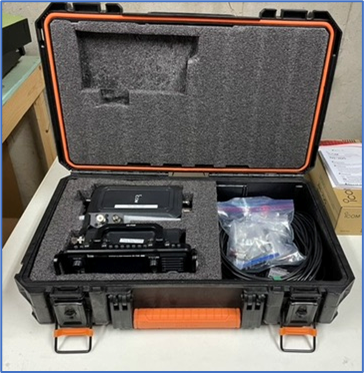
The first go-box build was based on an ICOM ID-5100 contained within a RIDGID brand Pro Organizer with the RIDGID Tool Cart holding a 30 ah LiFePO4, coax, tools, etc. The second go-box held in a 4U server case an ICOM ID-7100, Yaesu FT-400XDR, PSU and Kantronics KPC3+. These first two go-boxes were oriented at and saw lots of ARES field work. The second box with its IC-7100 also saw service in Parks on the Air (POTA) activations.
There are so many choices to make in building a radio go-box. First step is to define its mission and the requirements to meet that mission. Example, the first go-box with ID-5100 is oriented at rapid deployment to local area ARES operations, primarily voice and if needed off-grid. It also had a Signalink for digital work. The second go-box with its dual-radio setup allows for parallel operation on HF bands and local area voice plus digital operation. Its mission also primarily ARES field work then later POTA. The third go-box build is a mission change with it focusing on POTA wrapped around the ICOM IC-705 radio.
For the rest of discussion, we’ll focus on the power source change for this new build, moving away from the power/tool cart to a smaller, substantially lighter hand-carry box. As before weather resistant.
The DIY power box service requirements include powering the IC-705, its AT-705 tuner, a laptop and charge ports for USB A and C devices. Operating time should allow for half-day POTA operation in both digital and voice modes.
I must say that there was feature creep in the power source solution. With what originally started out as only a LiFePO4 battery with an external battery charge wart saw the inclusion of a West Mountain brand Epic PwrGate. The PwrGate has nice features to include auto switching between battery and external power, battery charging and direct solar panel input.
The Harbor Freight Tactical Ammo/Utility Box used in the construction provides sufficient space for a low profile ECO-Worthy brand 20 ah LiFePO4 battery. It is low enough that it allows me to retain use of the internal, removable tray. One side of the tray is reserved space for the power outlets on the lid. The opposite side is where I store the battery charger. So, if I have external 13.8 VDC for primary power it will use the Epic PwrGate to charge the battery. If I have 120 VAC but not a PSU, I’ll plug in the power wart LiFePO4 charger. Down the road I may add a solar panel!
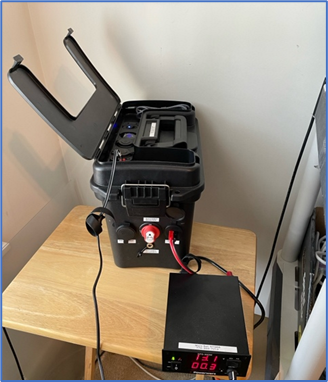
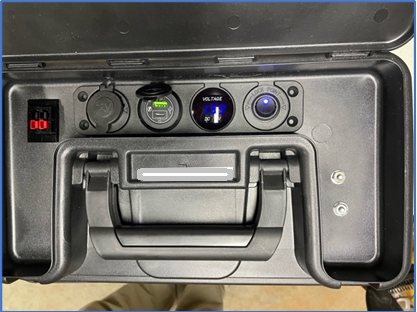
The top of the box has a quick access compartment that is used for power out connections. There are two sets of Anderson PowerPoles that are for radio and tuner usage. A car 12 VDC receptacle. a combination USB A and C charge port adapter, voltage monitor and a power switch controlling these three items. There is enough room in the tray for the wall wart battery charger (a portion of the tray space is taken up by the lid mounted interior side of the power out devices).
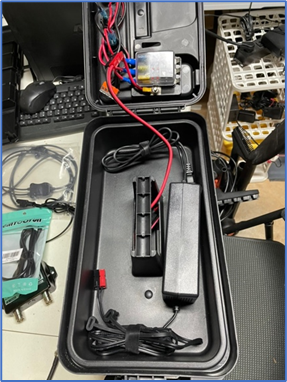
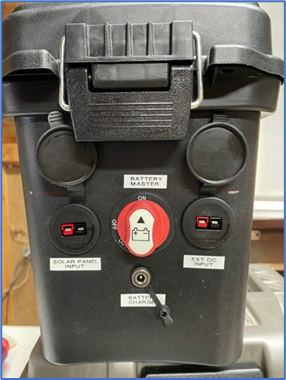
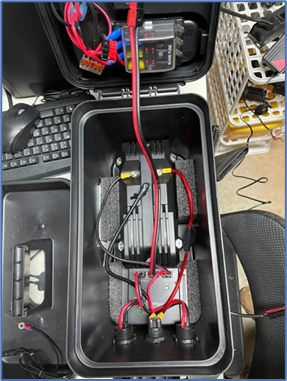
On one side of the box are two bulkhead mounted Anderson PowerPole connectors. One is for solar panel input and the other for external 13.8 VDC input. The third connector is an inline jack socket used by the wall wart charger going direct to the battery’s charge port.
I did not realize when I first added the Epic PwrGate into the box configuration that the PwrGate draws residual (parasitic) power, a small amount but nonetheless a drain source. I could just unplug the battery from the PwrGate when it is not in use putting a little wear and tear on the associated Anderson PowerPoles. Adding the master battery switch between the battery and the PwrGate makes it more user friendly.
All wiring is done with scrap pieces of 12 awg strand wire. Power out from the Epic PwrGate runs thru an opening in the interior tray to a marine grade 6-port (only using three ports) fuse block I had lying around. There’s a master 30-amp auto style fuse between the battery and the PwrGate. If I need to remove the tray to access this fuse, the battery or PwrGate its one pair of PowerPoles to disconnect next to the fuse block.
How much did this power box cost to build? Well pre-Epic PwrGate feature creep roughly $175 (got a great Cyber Monday deal on the battery). Post feature creep right around $400.
Fun stuff … Mark N7GRB
Technical Specialist, GA Section ARRL
1 note
·
View note
Text
Signal ink usb software, wireless USB, cheap USB, mini-USB, Universal Serial Bus
USB3315 Series 3.3 V 24 MHz USB 2.0 High Speed ULPI Transceiver - QFN-24
#Microchip#USB3315C-CP-TR#Signal Interface#USB#Signal ink usb software#wireless USB#cheap USB#mini-USB#Universal Serial Bus#radio interface#wifi adapters#signalink usb#usb interface cable#usb microphone cable#ethernet adapters
1 note
·
View note
Link
Here you can purchase all your edible printing supplies direct and take advantage of our fast delivery service from Royal Mail, Parcelforce & FedEx. Don't forget to sign in for the first time & get great discounts on a range of our products.
1 note
·
View note
Photo

#10: SLUSB6PM SIGNALINK USB FOR 6-PIN MINI DIN DATA http://amzn.to/2wc3AMV
1 note
·
View note
Photo

SLUSB6PM SIGNALINK USB FOR 6-PIN MINI DIN DATA
https://huntinggearsuperstore.com/product/slusb6pm-signalink-usb-for-6-pin-mini-din-data/
Missing Attachment Missing Attachment SignaLink USB for 6-Pin mini DIN What’s Included? SignaLink USB main unit Driver mini-CD Internal Jumper wire pin-out instructions (Don’t feel like messin’ with tiny wires inside? Buy the 6-pin Jumper Module instead.) USB Cable (to the computer) 6-pin mini-DIN cable (to the radio) Compatible Radios Include: ICOM IC-207H, IC-208H IC-2720H IC-2800, IC-2820 […]
0 notes
Text
VARA HF Setup Guide for KN4OLA’s IC-706MKIIG 📦 Hardware Inventory Item Description 1 Panasonic CF-33 laptop – Water-resistant for field use 2 ICOM IC-706MKIIG – Japanese model with fan mod, UT-106, FL-223, FL-101, TX/RX mods[i] 3 ICOM AT-180 – Automatic tuner 4 Signalink USB – Newer than 2018 or board version higher than v200 5 Signalink SLCAB6PM – 6-pin DIN; NOTE: AT-180 blocks 13-pin…
0 notes
Text
Echolink for Beginners - Brian Schell
Echolink for Beginners Second Edition Brian Schell Genre: Engineering Price: $4.99 Publish Date: October 27, 2015 Publisher: BlueHouseBooks.com Seller: Brian Schell A Practical, What-You-Need-to-Know Guide to Getting on Echolink Echolink is a powerful system for linking the worlds of amateur radio and the Internet. You can link your PC, Android, iPhone, iPad or handheld radio to repeaters, individuals, or conferences located anywhere in the world, quickly and easily. And because it’s all digital, you get crystal clear, digital sound. If you are a licensed Amateur Radio operator (ham), now you can communicate with other hams directly over the Internet, using streaming audio technology. Complex interfacing isn’t necessary to get started with Echolink. All you need is either a Windows PC with a microphone or an Apple iOS or Android device (iPads, iPods, Nexus, iPhone, Samsung, etc.). Yes, all you need to start is an app on your smartphone, there are no other costs involved. This short book gives you a practical, step-by-step walkthrough of all the options to set up your Echolink “Station.” From registering your call sign with Echolink to installing the software on your PC, Android, or Apple device and making your first calls to individuals, ham repeaters, or conferences. This book covers everything you need to get started. The book boils down the vast amount of unnecessary technical information that can be found on the Echolink website (and other websites). It really is all-you-need-to-know. This new edition now adds a new chapter, “Sysop Mode,” which covers basic interfacing between your computer and a radio. It uses the example of connecting up a Baofeng UV-5R radio with a SignaLink device to use as an Echolink node. This step-by-step example works easily for this common radio, and is easily modified to suit other radios. Inside you’ll find step-by-step tutorials on how use your radio or dongle to: •Install and configure the software •Connect to Conferences, the “Chat rooms” of Echolink •Link to distant amateur radio repeaters repeaters •Link to individuals without knowing their location •Setup a linked radio to allow you to access Echolink from your handheld radio This short book gives you a simple step-by-step walkthrough of all the options to set up your Echolink station using dozens of screenshots and many examples. The whole process is detailed, from registering your call sign with the Echolink network to installing the Echolink software on your PC or mobile device and making your first calls to individuals, ham repeaters, or conferences. http://dlvr.it/R4xzGC
0 notes
Text
Yaesu FT-1000MP and Signalink settings
Yaesu FT-1000MP and Signalink settings
View On WordPress
0 notes
Video
youtube
TelescopeMan describes a Signalink (sound card) used to connect an amateur radio to a computer. There is also another popular device called a Rigblaster. Links to these products are shown in the comments.
Be sure to turn off and or minimize ALC and AGC. On my Flex radio I use the "FAST" setting. On a regular radio very little or NO ALC/AGC should show on the radio's meter. Once this is setup you will be able to work FT8, JT65, RTTY, JT9, PSK31, and a multitude of other digital modes on amateur radio.
Links are on my YouTube page-- https://www.youtube.com/user/jlalumia
0 notes
Photo
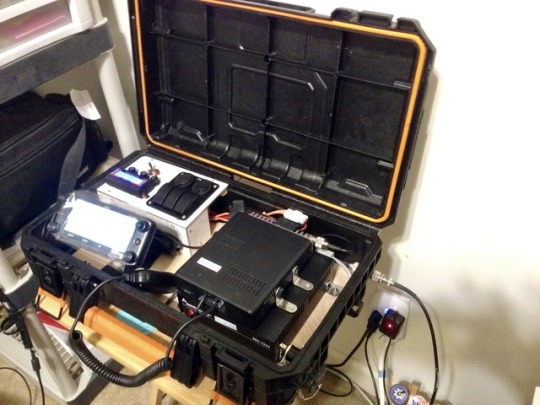
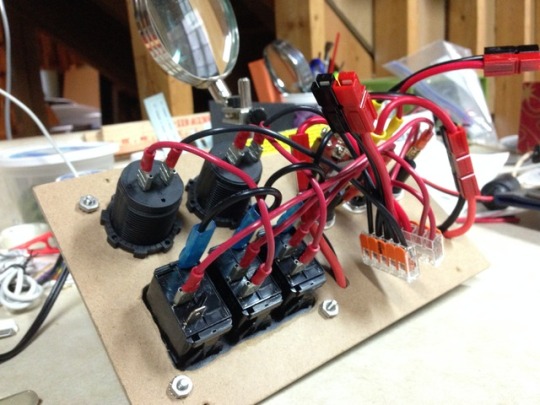

Panel wiring completed today and inserted into the go-box. Radio and power supply bolted to base board and firmly attached to the RIDGID Pro Organizer. Antenna connected to external SO-239, AC to box power-in. Radio powered up and check done through local repeater. All works well! The core of the go-box is complete.
From here on out it is adding icing to the cake. A white board will be fitted to the inside of the box’s lid. A pair of speakers and LED lighting will be added to the lid. A reversible platform / protective box will be build to hold the Signalink and A/B switch. This will fit in the space in front of the panel.
1 note
·
View note
Photo
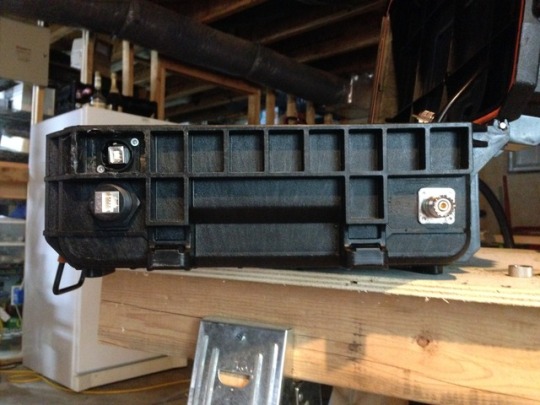
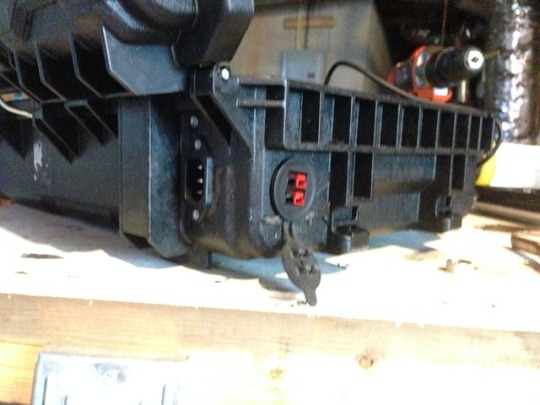
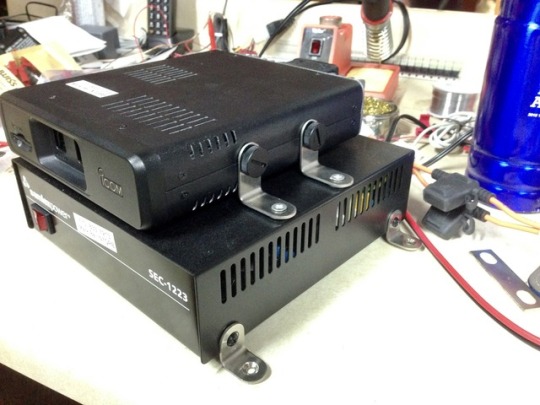
Connectors for antenna, power, mike and USB (PC control of Signalink) along with radio mounted to power supply - good progress this weekend.
1 note
·
View note
Photo
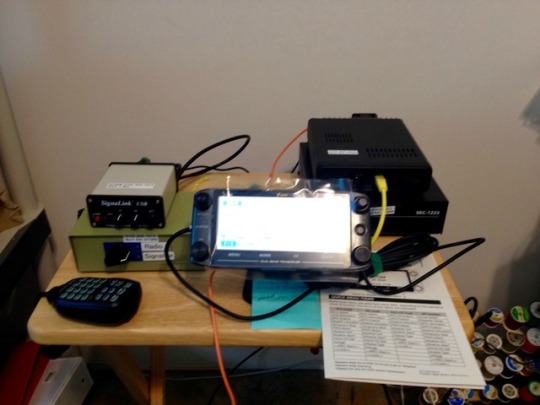
ICOM ID-5100, PSU, Signalink and A/B switch destined for the radio box.
1 note
·
View note